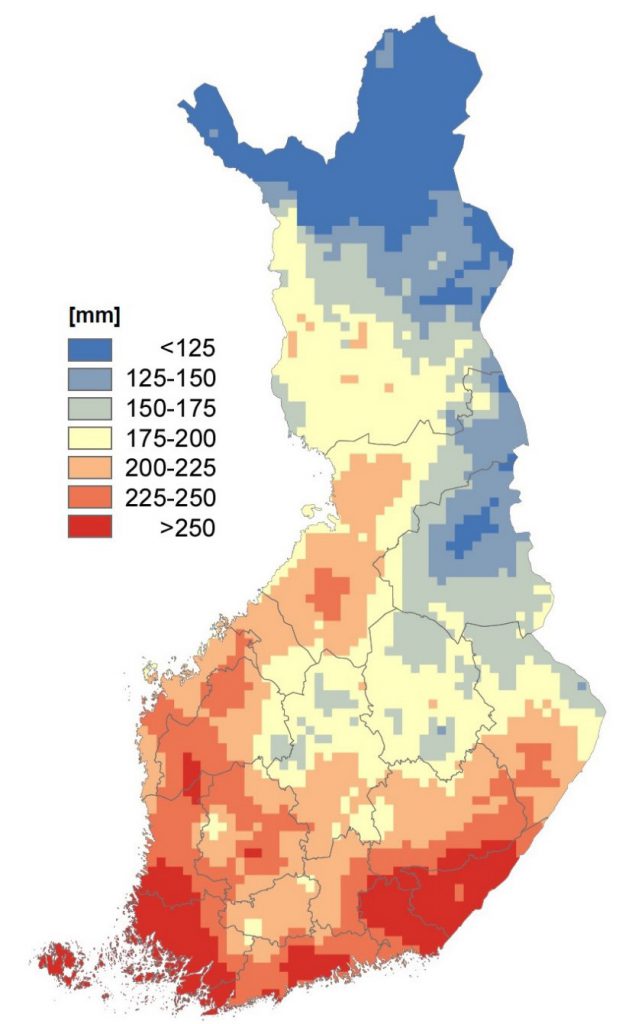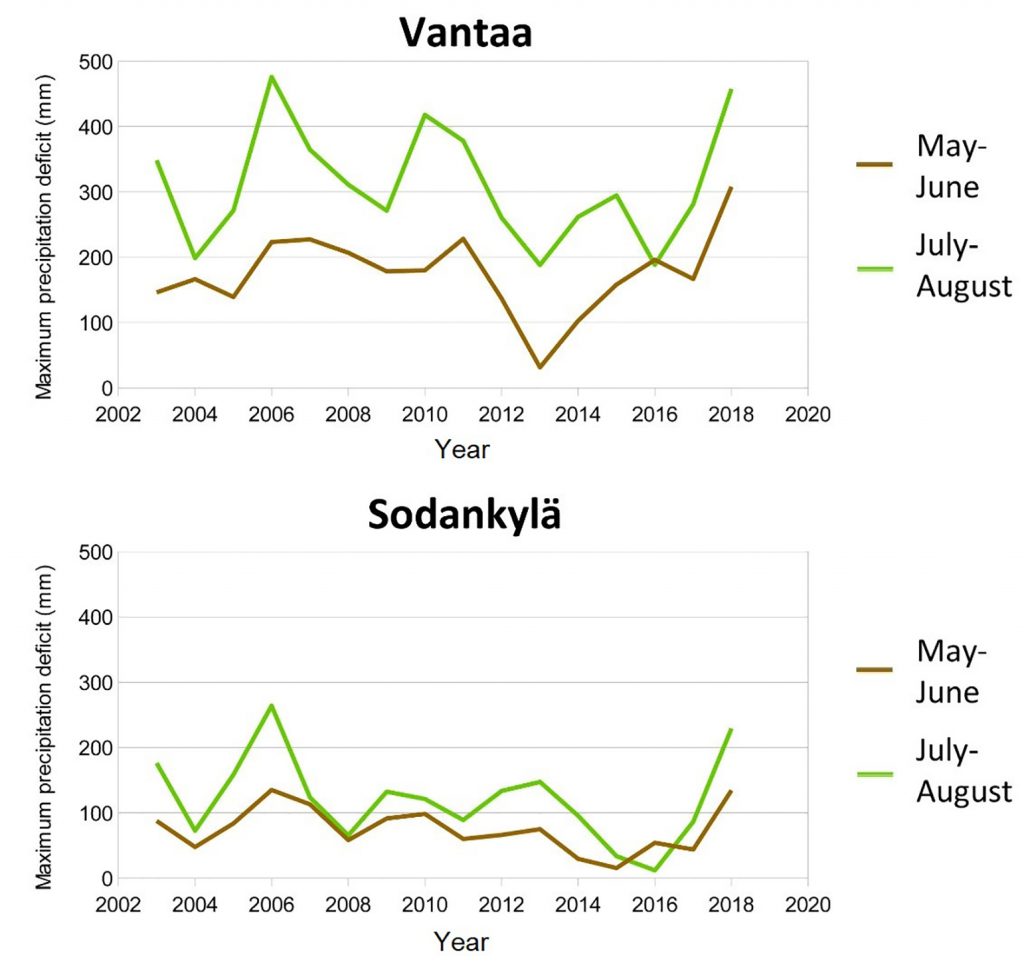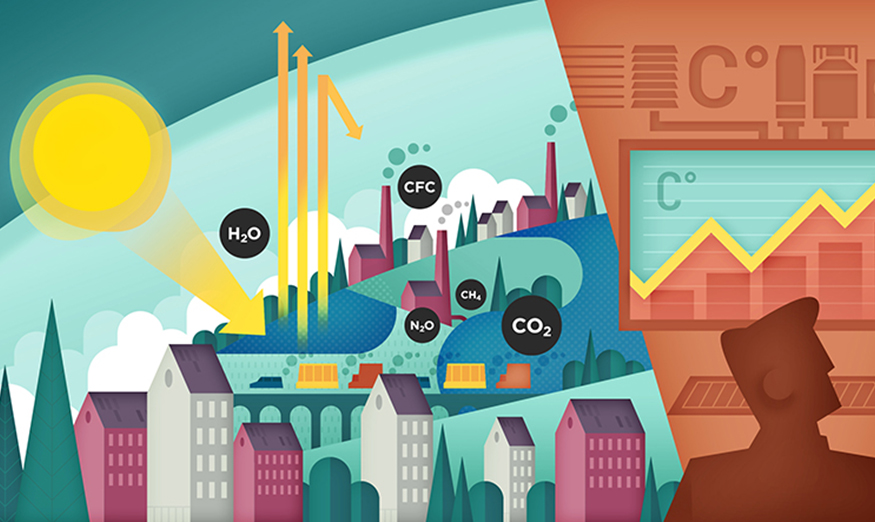In addition to high temperatures, the thermal growing season of 2018 in Finland was characterized by low precipitation, particularly in May and early June. Accompanied with warm and sunny weather, low precipitation lead to harsh dryness.
ILARI LEHTONEN, PENTTI PIRINEN
Finnish Meteorological Institute
Precipitation deficit, defined as a difference between potential evaporation and precipitation, can be used as a measure for drought severity (e.g., Hao et al., 2018). At Finnish Meteorological Institute, potential evaporation is routinely calculated with the Penman-Monteith equation (Monteith, 1981) by using gridded daily weather data at 10 km × 10 km grid (Venäläinen and Heikinheimo, 2002). Comparable data goes back to 2003. Potential evaporation describes the amount of evaporation that would occur if a sufficient water source were available.
In the Finnish conditions, soil is typically moist in early spring. Evaporative demand is small during winter and melting snow provides additional moisture in spring. Hence, drought severity can be assessed by calculating cumulative precipitation deficit from the beginning of thermal growing season. In summer, potential evaporation usually exceeds precipitation leading to an increasing precipitation deficit towards the end of thermal growing season. On the driest years, however, severe drought may occur already during early summer. For spouting of cultivated plants and crops this may be specifically harmful.
The thermal growing season of 2018 in Finland was not only exceptionally warm but also very dry. Particularly in May and early June no rain fell in wide areas for several weeks. As May was at the same time record warm and sunny, precipitation deficit started to accumulate rapidly and by the end of June, precipitation deficit had exceeded 200 mm virtually everywhere in southern and western Finland (Fig. 1). Compared to recent years, the maximum precipitation deficit until the end of June was mostly the largest (Fig. 2). On many years, the maximum precipitation deficit of the whole thermal growing season had remained smaller. Considering the whole summer, both at Vantaa in southern Finland and at Sodankylä in northern Finland, precipitation deficit was almost as high as in 2006 which has been generally considered the driest summer during the recorded history in Finland (Nordlund, 2006).


As potential evaporation is largely affected by temperature, droughts are expected to occur more frequently in the future due to global warming. In Finland, it has been estimated that as severe drought as occurred in the late 20th century once in a decade could occur in the late 21st century every second or third year (Ruosteenoja et al., 2018).
References
Hao, Z., et al., 2018: Seasonal drought prediction: Advances, challenges, and future prospects. Rev. Geophys., 56, 108–141.
Monteith, J. L., 1981: Evaporation and surface temperature. Quart. J. Roy. Meteor. Soc., 107, 1–27.
Nordlund, A., 2006: Laajasti kaikkien aikojen kuivin hellekesä. Ilmastokatsaus, 11, 4.
Ruosteenoja, K., et al., 2018: Seasonal soil moisture and drought occurrence in Europe in CMIP5 projections for the 21st century. Clim. Dyn., 50, 1177–1192.
Venäläinen, A., and Heikinheimo, M., 2002: Meteorological data for agricultural applications. Phys. Chem. Earth, 27, 1045–1050.
HOW TO CITE THIS ARTICLE:
Lehtonen I., and Pirinen P., 2019: 2018: An exceptionally dry thermal growing season in Finland, FMI’s Climate Bulletin: Research Letters, 1(1), 6, DOI: 10.35614/ISSN-2341-6408-IK-2019-04-RL
CITATION INFORMATION:
Authors: Ilari Lehtonen and Pentti Pirinen
Received: March 28, 2019
Accepted: June 11, 2019
First online: June 19, 2019
Published: June 20, 2019
Journal: FMI’s Climate Bulletin: Research Letters
Volume: 1
Issue: 1
Page: 6
DOI: 10.35614/ISSN-2341-6408-IK-2019-04-RL
Header image: Eija Vallinheimo




